I'm gonna start off by apologizing for how ridiculously long this is going to be, but If you have the time and patience, It will be worth the read.
Now we all saw the news.
"UFC 4 sets a launch sales record for the EA UFC series".
What does this mean for the future of the franchise? I can't say for sure. If I had to guess though, I'd say there is a very good chance we will be seeing a UFC 5 (Or whatever they decide to call it).
Now to some of you, that's dreadful news. You want another developer to take over and start afresh. For me, the devil I know is better than the angel I don't.
I look at this as yet another chance to make my voice heard and this time, I'm starting very very early. IF we do get another UFC game, chances are (Based on what I've learned from the Devs in the past), the planning stages has already begun.
So here we are.
In this thread, I would like to discuss a few changes and additions that I believe would not just make striking better, but also FEEL and LOOK better.
1) Stationary Strikes, Stepping Strikes and Lunging Strikes:
The best strikers in the world are great judges of distance. They know precisely how close, or how far away from their opponent they need to be in order to attack, defend effectively, as well as counter effectively.
To say that EA's UFC games has made distance management very difficult would be a major understatement. It is much better than it once was, but if this aspect of striking is to truly improved, there NEEDS to be a very clear, consistent difference between stationary, stepping and lunging strikes.
Perhaps we should first define what these mean.
Stationary Strike:
A stationary strike is a strike that is thrown without a single step in any direction. The fighter finds the appropriate distance, plants his feet and strikes directly from that distance.
Stepping Strike:
This is a strike thrown after a single step. This is used when a fighter is almost at the perfect range and he wants to make a very small adjustment to his distance. So he takes a small step to get him into range before letting the shot go.
Lunging Strike:
This strike is used when a fighter is out of range to land a stationary strike and a stepping strike, but wants to get to the opponent very quickly. Visually, the fighter leaps forward into the strike and a clear characteristic of this type of strike is that IF they miss, due to the conservation of momentum, the fighter always takes a few extra steps before coming to a full stop.
Now it's important to acknowledge that EA attempted to distinguish between these types of strikes in UFC 4, but because of the numerous sliding issues in the game, it completely defeats the purpose.
A stationary strike MUST remain stationary at all times. The game should not do "Math" and calculate that a stationary strike should've landed, hence it deserves to be "Assisted to land" by sliding it forward.
This happens all the time in the game. Your opponent throws a stationary strike, you attempt to either back away or evade the strike with head movement but the strike slides forward in an unnatural way and lands anyway.
It is very important that these strikes NEVER extend beyond their assigned range because we as players NEED and should have full control of our fighter at all times. Don't advance my fighter unless I want him to advance. Don't make my fighter retreat, unless I want him to retreat... Especially when it makes no sense physics wise. This will also add another level of skill to the game. The more precise the distance management is, the cleaner striking will become.
Controls:
Let's use the cross for example using the Playstation controller:
- Stationary Cross - Triangle
- Stepping Cross - Push forward on the left stick and press Triangle
- Lunging Cross - Flick forward on the left stick and press Triangle.
2) More Unique Strike Animations:
There's a tendency to outright replace old animations with new ones and at the end of the day, we end up right where we were. What we need is "More", not an outright replacement of the old ones.
That means, for example... when we ask for a new, better question mark kick animation, we are not asking for a replacement of the old one completely. We are asking for the old one to be kept and assigned to fighters who aren't too proficient at the technique, but then assign the new one to a man like Israel Adesanya who DESERVES! to have this technique depicted correctly.
When it comes to Jabs and straights, the team has a done a great job of adding a variety of animations to differentiate between fighters as well as move levels. Some fighters also have their own unique set of Jab/straight animations like Conor with his Celtic cross and Nate Diaz with his looping straight.
These are great and commendable!.
The hooks and uppercuts on the other hand are severely lacking. The only fighter with his own unique hook animations in the game is Wanderlei Silva. Simply put, we need more.
For now I'm gonna focus on "Hook" animations, but I could also provide references for the various types of uppercuts we see in MMA.
There are two variations of hooks that we see in MMA:
- Thumb In (Carlos Condit)
- Thumb down (Dan Hardy). This is also the version we have in UFC 4.
Now under these two variations, we have 3 variations.
Palm In:
- Elbows pointing downwards (Shovel hook)
- Elbows pointing upwards (Cuban Hook)
- Elbows Straight (Regular hook)
Palm Down:
- Elbows pointing downwards
- Elbows pointing upwards
- Elbows Straight
Thumb In (Elbow Up)
Thumb In (Elbow Down... Pay attention to Condit)
Thumb in (Elbow straight)
I can find GIFS to showcase what the palm down versions also look like, but I think you get the point.
Some fighters do a combination of both. They might throw the lead hook with their thumb in and elbow up but throw their rear hook with the thumb in elbow down.
Example:
The differences here are subtle and admittedly, it is not flashy or shouty. But these are the sort of additions that makes a Mixed Martial Arts game truly memorable. When the fighters are assigned unique animations that make them feel different when you pick them up to use.
3) A More Realistic Way To Present Blocking:
This request focuses on the aesthetics of blocking, not the mechanics. I could spend time asking for a new block mechanic (Like a front and side block as opposed to High and Low) but I have a feeling that's just not gonna happen, so I'll settle for requesting a change that I believe makes sense and will make blocking feel and LOOK much more natural while keeping the High and Low mechanic.
When we hold either R2 to make our fighter block high or R2+L2 to make our fighter block low, a ready animation plays. This is the animation that says "Your fighter is now ready to block incoming strikes".
Below is the current universal ready animation that plays when we hold R2 (High block) in UFC4:
Below is the current universal ready animation that plays when we hold R2 + L2 (Low block) in UFC4:
Whether you're using Stephen Thompson or Ben Askren, these are the ready animations that play when you hold either high or low block. When a strike is thrown at you, these ready animations switch to active block animations.
This is the active block animation that plays when you are actively blocking head strikes:
The issue:
If the goal is fighter uniqueness and individuality, assigning the same exact ready animation to every single fighter on the roster, regardless of their fight style completely defeats the purpose. It simply does not look good when every fighter on the roster is walking around looking exactly the same. It kills immersion.
The Suggestion:
In real life, a fighter at the ready is a fighter in his unique fight stance. When a coach tells their fighter to keep their hands up, he is just telling them to assume a fight stance that will allow them to block incoming shots quickly.
"Keep your hands up" to a Muay-Thai fighter looks different to that of a Karate fighter, or a boxer, or a wrestler.
Rather than using universal ready animations for every single fighter on the roster, a much better solution is this:
When a player is NOT holding R2 (High block) or R2+L2 (Low block), the fighters hands should be completely down. This means, the fighter is not at the ready, he is in neutral. If capturing a brand new hands down stance isn't possible, Anderson Silvas far idle could be used for this.
That would clearly send a message to players that "Your fighter is wide open".
When the player holds R2 (High block) or R2+L2 (Low block)… the fighter goes into his unique fight stance. So if I'm using Stephen Thompson and I hold either high or low block, rather than going into some universal ready stance, my fighter assumes Wonderboys unique fight stance instead.
This way when players are holding high or low block, what we will see on screen are just fighters moving around in their unique fight stances. So much more natural.
If this is implemented, it would look similar to the Gif below in action.
Lets pretend the Gif below is a video game sequence. Jon Jones while holding block (Could be high or low block) throws a forward moving turning side kick, then he lets go of block and reengages block as his opponent regroups.
Now if while the player is NOT holding block, they notice a strike coming and they hold block right away, the animation that plays will skip their unique fight stance and instead go directly into playing active block animations.
Example:
Likely Concern:
A concern some of you might have is... How do we know when the opponent is blocking high or low if holding high or low block triggers the fighters unique fight stance.
My answer to that is... Fighters in real life don't look for where their opponent is actively blocking. Again, fighters in real life don't walk around the octagon ACTIVELY blocking either high or low. They just move around in their fight stance and then block accordingly when they notice a strike coming.
This is how it should be in the game as well. We shouldn't strike depending on where the opponent is blocking. Because of the fact that the blocking mechanic is high and low though, I understand that knowing where the opponent is blocking will be a necessity, and the solution to that realistically would be feints.
Feints should not only be used to set up attacks but also as a way to reveal where the opponent is vulnerable.
If I feint high and your fighter plays an ACTIVE block animation (Like the animation to block a hook to the head), that tells me you are holding high block.
If I feint low and your fighter plays an ACTIVE block animation, (like a body hook block, or leg kick check), that tells me you are holding low block.
Once I reveal where you are blocking, I can then plan my attacks. This opens up a mind game element where fighters will try to be sneaky with their blocks as well as attacks.
Overall, this would be a much more interesting, unique and realistic way to present blocking in the franchise.
4) Held Inputs Are Unnecessary For Technique Strikes:
One of the changes to striking in UFC 4 is that... for certain strikes, specifically technique strikes, the input will have to be held.
An example is the wheel kick to the head. To perform this technique in the game it is rear spinning backfist input but held down... so L1+R1+ Triangle held down. There are many other technique strikes that must be held down like this.
This was a clever way to deal with the fact that the controller has very limited inputs and representing every single strike available to certain fighters can be very difficult to do with those limited inputs. I applaud the team for at least trying something.
That said, I think there's a better way to do this. A simpler and more realistic way. With stance switches.
Let me explain.
When you think of fighters like Israel Adesanya, Jon Jones, Stephen Thompson and Sean O'malley... the one thing they all have in common is how wide their strike arsenal is and the fact that they are great stance switchers. If you take a closer look though, you'll notice that they are not proficient with every technique from both stances. Infact, some of them ONLY throw certain techniques from one specific stance.
I'm very very familiar with Jon Jones so I'll use him as an example.
When it comes to leg kicks, Jon Jones throws the lead leg kick, rear leg kick, front leg side kick and oblique.
When it comes to body kicks, he throws the rear Teep, lead switch, rear roundhouse, front leg side kick, rear leg side kick and the jumping spin kick to the body.
When it comes to high kicks, he throws a lead roundhouse, rear roundhouse, lead front kick, rear front kick, lead leg side kick, rear leg side kick, rear leg question mark kick, rear leg axe kick, rear wheel kick.
As you can see, that is a crap ton of strikes available to one man.
The good news is, Jon Jones just like most other fighters does NOT throw all those strikes from the same stance.
Take for instance, his leg kicks. (You can do your own research on this if you don't take my word for it).
Jon Jones prefers to throw the front leg side kick as well as the oblique kick to the leg from Orthodox. When he wants to throw a regular lead or rear roundhouse, he prefers to do it from southpaw.
Wonderboy for example, becomes much wider in his stance and also becomes very side kick heavy when he is in southpaw.
The Suggestion:
For those fighters with a wide variety of strikes in their tool box, Rather than using held inputs, assign specific strikes to them depending on their stance. This way, when we want to access a specific strike, we can switch to the appropriate stance and gain access to the technique.
This way you can assign the front leg side kick to the legs and oblique kick to Jones in orthodox, and when we switch to southpaw, we can then throw his regular roundhouse leg kicks.... ALL using the same leg kick inputs.
This will require some studying of course but that's what you have Gamechangers for. I for one would be more than willing to take this on.
This change will make these strikes far less complicated to throw while also maintaining realism. Win win for everyone.
5) Better Hit Reactions To Make The Game More Responsive:
A major complaint we've seen throughout the duration of this games life cycle is the complaint of "Responsiveness". I suspect that a lot of the responsiveness issues people complain about can be directly traced back to hit reactions, or the lack of it in most cases.
Here's an example:
In the clip above, Barboza throws and lands a clean leg kick on Dustin. But there is absolutely no hit reaction... not even a little one. How does this make the game feel unresponsive? Well it does because the lack of hit reaction does not SELL the fact that the leg kick is accompanied by a "hit stun".
A hit stun is a period of time after being hit by a strike that the fighter is unable to act. After a leg kick is landed clean, the only action you can perform RIGHT away is a block, or lunge. If you try to strike right away, you will not be able to because you're still stunned from the hit.
Now IF there was a hit reaction after the strike lands, the player would VISUALLY understand why he cannot strike because he will clearly see his fighter reacting to the strike he just ate. He won't sit there wondering "Why isn't my strike input working???, I just pressed square to punch!! why isn't my character punching!!". It would be clear that "You're not punching because you're still in the process of reacting to the strike you just took".
Take this next clip for example:
The hit REACTION sells the Hit STUN.
If you tried to punch DURING the hit REACTION and your punch input doesn't register, you would understand why. It'd be like trying to punch as your fighter is falling down after getting head kicked... You wouldn't question why you weren't able to punch and in turn, the game wouldn't feel unresponsive.
Keep in mind, I just used leg kicks as one example. This also applies to punches and other kicks.
Solution:
Improve hit reactions across the board. Treat the fighters in your game as living breathing humans who feel pain, not marble statues who can absorb powerful strikes without reacting to it. That would GREATLY improve the games responsiveness.
6) Something Better Than The Invisible Wall Separating Fighters:
Currently in this game, as well as every single fighting game I've played, there is an invisible wall designed to keep fighters from crashing directly into each other.
Example:
A sequence like the above would never happen in UFC4 because the game would constantly keep Jan at optimal range, regardless of how aggressive the player is being.
Suggestion:
Allow for more natural contextual reactions when two fighters get too close to each other. Whether it's physics based (Ideal if done correctly) or with preset animations, this would make the fighters feel so much more natural.
Here are a few examples for inspiration:
A) Head to head from advancing:
B) Head to head from colliding:
C) Shoulder to shoulder:
D) Brief Over/Under clinch:
E) Hand to hand:
You could even expand it to include contextual scenarios that only plays out under very specific conditions.
Take Leon Edwards for example. He has an incredible wealth of knowledge when it comes to the clinch. You could design a context based system that forces his opponent to collide into his DOM over/under position where he gets strike priority.
A scenario that only plays when he slips to the outside of a cross while keeping his feet planted so the opponent whiffs AND runs into him.
Like this:
Oooor you could just allow it for all fighters.
This would add far more skill to pressure fighting. Pressure fighters will learn that over-extending means they'll CONSTANTLY stifle their own offense and run into their opponent repeatedly which in turn will force them try to keep the opponent at the end of their punches with well placed shots as opposed to constantly throwing forward moving combinations.
I expect a bit of push back on this idea and I am sooooo eager to debate you guys on it. If you have any concerns with this or hell, if you have ideas that could improve this specific idea, please don't hesitate to chime in. Let's all brain storm together.
7) Motion Capture ALL Combinations, As Opposed To Stitching:
I don't know this for a fact, but I am about 95% sure that most combinations in the EA Sports UFC series was not motion captured, but instead stitched together. This much is obvious to me.
Stitching strikes together to form a combo most likely saves time, effort and money, I get that, but it has created so many issues for this series and I'd like to discuss that.
Take a look at the combo below:
Max throws a lateral moving rear uppercut, then follows up with a forward moving lead hook. Simply put, in real life, it is physically impossible to throw that combination THESAME EXACT way Max threw it in the clip above. It simply cannot be done and I challenge anyone here to try to replicate that.
We've talked about this in the past, but when it comes to specific combinations, especially when forward and lateral movement is involved, you CANNOT maintain speed and distance. One must be given up.
In the clip above, Max defies the laws of physics. He glides to his right with an uppercut then without a single pause, he glides forward with a lead hook covering a lot of distance. He retained full speed and distance. It might even be tough for Clark Kent to pull that off and the son of a gun can fly.
This isn't the only unrealistic, physics defying sequence in the game. There are myriads of them. It would be extremely difficult to go through EVERY single possible combination, (which includes backwards to side, side to back, back to forward, side to side forward to back, forward to side strike combinations) and adjust them all to play out realistically. So why not just capture them using motion capture?.
Motion capture would ensure that every single combo in the game is obeying the laws of physics, because a human being would actually have to perform these combos.
If this happens, you'll notice that a lot of combos, especially long ones won't cover anywhere near as much distance as they cover in the game right now while also retaining speed. Pressure fighting, especially the combo slinging pressure style will take a hit and that's a good thing.
8) PARRIES:
This might be the most controversial request yet, specifically because "Parries" have NEVER been represented accurately in a video game. Every attempt to introduce parries has resulted in a mechanic so overpowered and broken it leaves players not even wanting to entertain the thought of it. I understand this fear and honestly, it's a fear I share as well.
That said, I don't think we should all just completely abandon the idea for fear it won't be done right again. Parrying is an extremely important aspect of striking martial arts it NEEDS to be represented. Not representing parries is about as ridiculous as not including a blocking mechanic or head movement mechanic in the game because it wasn't done correctly in the past.
So here we go.
First let's try to understand what a parry is. We ALL collectively must agree to it's definition. Because how it's defined will determine it's pros and cons in a video game.
What Is A Parry?
The term "Parry" was popularized by Fencing.
Fencing is a Saber (sword) fighting sports where the goal is to strike different parts of the opponents body to earn points. In fencing, parrying is a very effective tool used to deflect an attack allowing the defender some time to launch an attack of their own while their opponent is out of position.
That said, Fencing is not the only striking Martial Arts that utilizes parries. Boxing, Muay Thai, Kickboxing, Karate etc all utilize this concept.
Deflect your opponents strike and then counter.
The key word here is "Deflect". To deflect means to divert, to force a directional change. When a strike that is traveling in a straight line is deflected, the strikes PATH is changed making it far less accurate.
Now for something to be deflected, in this case a strike... it has to come into contact with something that forces it to change direction.
In the case of fencing... the sword is deflected by coming into contact with another sword. The sword it makes contact with forces it's direction to change.
NOTE:
A parry is NOT thesame as TRAPPING or Blocking.
Trapping a strike halts it. Blocking a strike reduces the strikes impact by putting a barrier between the strike and it's intended target.
A Parry DEFLECTS the strike. There's a key difference and I find that most times all 3 are confused.
Here's an example below:
Above... Floyd Mayweather traps a very short cross from Conor (Halting it). Conor follows up with a weird right hook that he most certainly didn't fully commit to, but then he fully commits to a cross which Floyd Mayweather DEFLECTS by swatting the strike to his left forcing a change in direction.
Now the strike that was traveling in a straight line is suddenly not. That is the what a parry is. That's the part I need you guys to pay attention to. DEFLECTING.
Now that we've clearly defined what a Parry is and what it isn't. The next question is...
What sort of strikes can a fighter realistically parry?
Mixed Martial Arts is a sport that allows the use of ALL limbs for striking. You are allowed to use your arms and your legs. But also broken down further, you are allowed to use your shoulders, your elbows and your knees to strike your opponent as well.
Another important note about Mixed Martial Arts is that you are also allowed to strike multiple parts of your opponents body. You are allowed to strike the head, the midsection and the legs. Unlike multiple other Martial arts where you're not allowed this much freedom.
Because of this, it is so important for Mixed Martial Artists to determine what sorts of strikes they can realistically and consistently parry and avoid wasting time on strikes that don't make much sense to try to parry.
For example.
It IS possible to parry a roundhouse kick to the head. You can, but the risk is so great, I don't know why anyone would want to try. Same goes for a flying knee lol. Sure in a perfect world you could deflect it, but my goodness why on earth would you want to even try when the risk of getting your head blown up is so great?
I bring up this specific point, because these are concessions we HAVE to make when deciding what strikes we should be able to parry in a Mixed Martial Arts video game. Just because it is POSSIBLE doesn't mean it should be allowed in the video game. By having limitations on what strikes should be "Parriable", we make things less complicated and in turn more achievable.
So what strikes SHOULD the game allow it's players to parry?
To make it simple... I think ONLY straight attacks should be allowed to be parried.
Especially in MMA where fighters are typically jack of all trades as opposed to masters in a specific discipline, it makes far more sense for the fighters to only be able to parry straight attacks. This also falls in line with what we actually see in MMA fighters.
Very very rarely do we see fighters attempt to parry hooks, overhand punches, uppercuts, spinning backfists, roundhouse kicks to the head, roundhouse kicks to the body, wheel kicks etc.
What we typically see are parries against the jab, cross, front kicks to the body, and other relatively easy to deflect straight attacks. Straight attacks are easier to deflect because their trajectory is more predictable. A hook for example is so easy to miscalculate. It has so much more options in terms of its trajectory changing on you at the last minute.
So we all have to agree that the most reasonable option is to ONLY allow parries on straight attacks. That's step one. As you read this blog, ask yourself if you agree with me here or not. If you agree, awesome, we can move on... if not, I'd love to hear your well thought out argument. Why should the game allow parries against round strikes?
Assuming we all agree that Parries should only be allowed against straight attacks, it's now time to figure out how on earth they are supposed to work realistically in a video game. A way that is balanced
and NOT broken.
The problem with parries in past MMA games is that it allowed for an extremely unrealistic counter window, especially with strikes that made no sense.
In past games, EA Sports UFC 2 and EA MMA to be specific, you could parry a single punch and then launch a head kick counter. This was possible because after you parry a punch in those games, the attacker is left stunned, unable to block for a long period of time allowing you time to counter with a big strike.
In the clip below. Fighter A parries a cross and has enough time to counter with a big overhand right followed by a lead roundhouse kick to the head before his opponent could recover from being parried.
This is absurd and treats a parry like it's some kind of super power. The truth is, parries are nowhere near this effective at creating counter opportunities. Not even close. To take advantage of the counter window created by a parry, a fighter MUST act swiftly with a strike of similar speed or the window will close before they can take advantage of it.
This means that generally speaking, if you parry a jab, you will only have time to counter with a jab or a cross before your opponent is able to put their hands back up to block. You will have even less time to counter IF your opponent immediately moves his head after getting parried but more on that later.
But you won't have though is enough time to counter with a hook, uppercut, overhand or head kick.
For this rule to be followed in game, the job of the parry should ONLY be to deflect a strike for a very very very short period of time. In a combo it should slow down the upcoming strike just enough to allow for a counter of similar speed. The slow down should BARELY be noticeable. It should still feel like the combo speed stayed exactly thesame. There should be no freezing effect, no stuck effect, no stun effect. The player should barely feel ANY disruption in the flow of his combo.
Now how is it possible to create a counter window without making the fighter feel stuck or stunned in place? It's possible if the game follows some well established rules. These rules do NOT change because a strike has been parried.
Lets talk about some of these rules.
- After a strike is thrown... whether landed or not, the fastest defensive action a fighter can take is to move his head.
- After a strike is thrown... whether landed or not, the second fastest defensive action a fighter can take is to move their feet.
- After a strike is thrown... whether landed or not, the 3rd fastest defensive action a fighter can take is to block.
- After a strike is thrown... whether landed or not, the 4th fastest defensive action a fighter can take is to parry.
The first rule is going to be extremely important to how parries will work.
When a fighter throws a punch and the punch misses, the first defensive action he can take to try to avoid the upcoming counter is to move his head. You cannot block quicker than you can move your head AFTER you throw a strike.
Keeping this in mind, EVEN after a punch is parried, players should be allowed to move their head instantaneously. The biggest mistake you can make with a parry system is to make the game feel unresponsive. I repeat... if a player throws a punch and his punch is parried, HE MUST BE ALLOWED TO IMMIDIATELY MOVE HIS HEAD TO TRY TO AVOID THE COUNTER.
If this rule cannot be followed, then just don't even bother with a parry system.
Now this raises a question.
If players can just move their head after their strike is parried, then what the hell is the point of having a parry system? If they can just dodge the counter after I parry them why even bother parrying?.
Good, I'm so glad you asked.
This is where I introduce my actual idea for the parry. Note, I am not making anything up here or coming up with some kind of brilliant solution to a problem. I am literally just following what already happens in real life.
What I've found is that when a fighter mirrors the striking hand with his parry, his counter is typically slow enough that his opponent can evade the counter.
If fighter A and be are both in Orthodox and fighter A throws a jab and fighter B parries with his right hand AND counters with his right hand... fighter A will usually have enough time to dodge the counter.
Here's an example:
In the clip above, Masvidal parries a jab with his right hand. He then attempts to counter with a cross (with his right hand) and his opponent has enough time move his head out of the way forcing Masvidals counter to miss completely.
This happens a lot. Masvidal is a fast man, and that parry was clean as hell. But you just can't bypass human physiology. You can only move as fast when you're trying to perform two separate actions with one arm.
A jab followed by a cross thrown at full speed with full extension will always be faster than a Cross Cross combo thrown at full speed with full extension. This is because you start throwing your cross before your jab has even reached the target. But you cannot throw a second cross until the first one has reached the target.
There are exceptions to this rule, but generally speaking this is how it works.
This is why... the absolute fastest way to parry and counter is to alternate between hands.
Example:
In the clip above, Diaz quite literally wouldn't have had enough time to move his head. He wouldn't have been able to because Conor parried with one hand and countered with the other. Parrying and countering this way allows him to load up his counter even before the parry is complete. It breaks down the tasks perfectly. Hey "Right hand, you deal with the parry and left hand you deal with the counter".
When tasks are broken down this way, you can move fast enough to reach the target before they can employ ANY defensive measures.
Kick Parries:
Only kicks that travel in a straight line to the body should be allowed to be parried. Teep kicks to the body from both the lead and rear leg. That should be it.
Example:
Suggestion:
Players should be given the option to parry with both arms. But what determines IF a counter will land successfully should be if the player alternates. He parries with his left and counters with the right. He parries with the right and counters with the left.
If a player parries with his right hand and tries to counter with thesame hand, then the other player should have enough time to MOVE his head out of the way and dodge the counter IF he anticipates the counter and inputs his slip as soon as he is parried.
Blocking should NOT be an effective option against a parry. If a player is parried, he should not have enough time to block the counter.
Controls:
This is a tough one. Right now the best option for parries I can see is R2+L2 (RB + LB) followed by tapping one of the face buttons for a left or right parry. There's nothing assigned to these controls as far as I can tell and they would be a comfortable option.
That it is for now. This blog will be updated to include more Wishlist's if/when I think of them.
Thank you for your time.







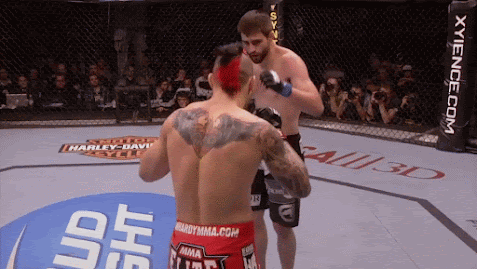




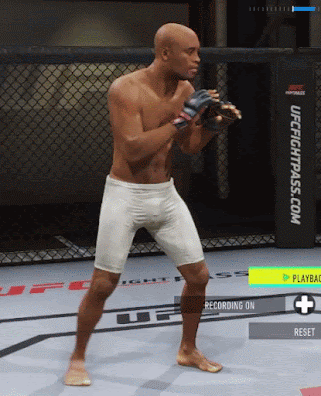

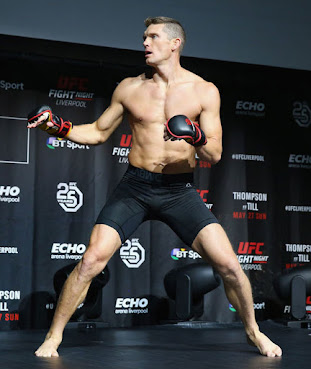

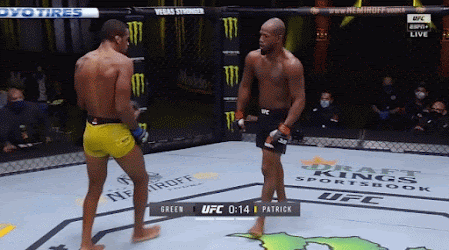
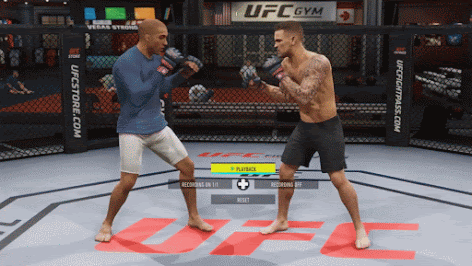







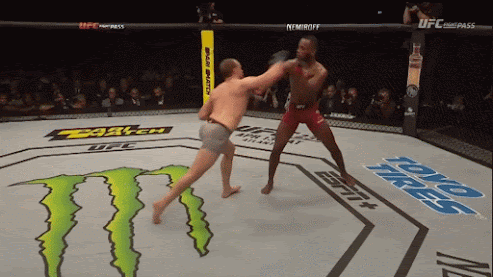

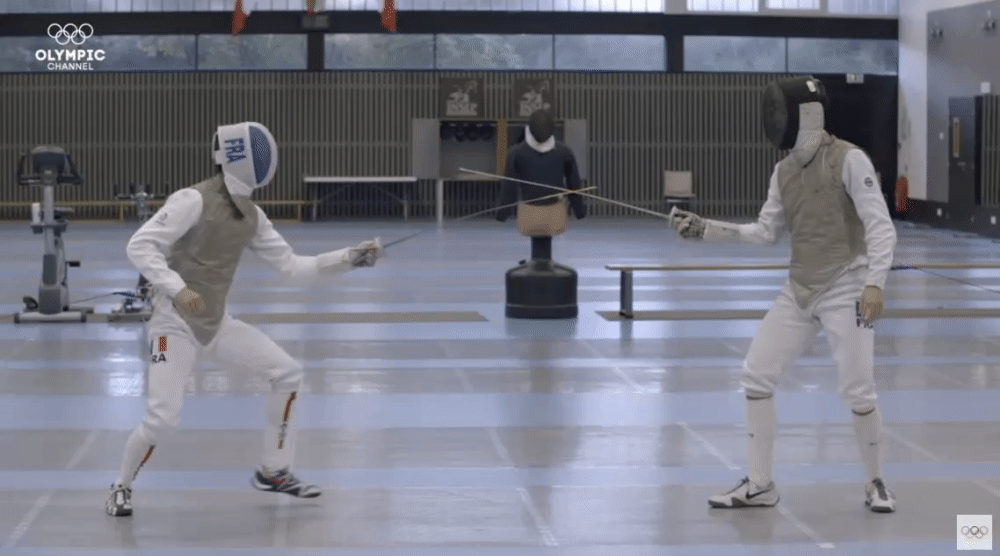
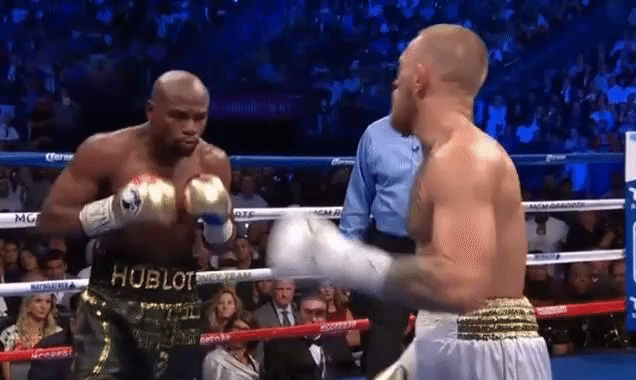

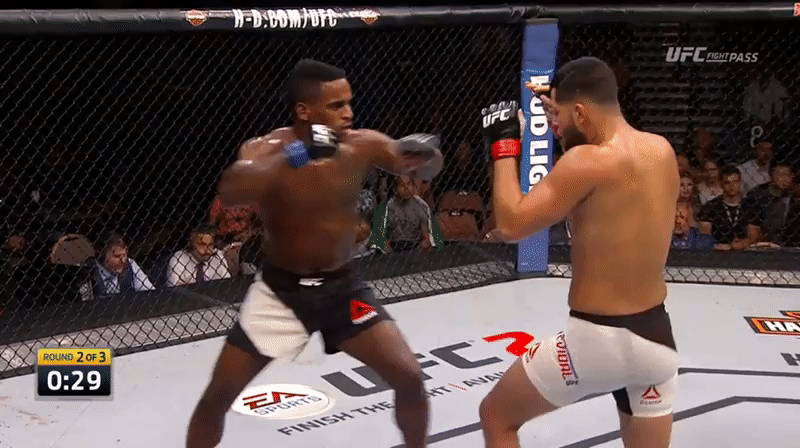
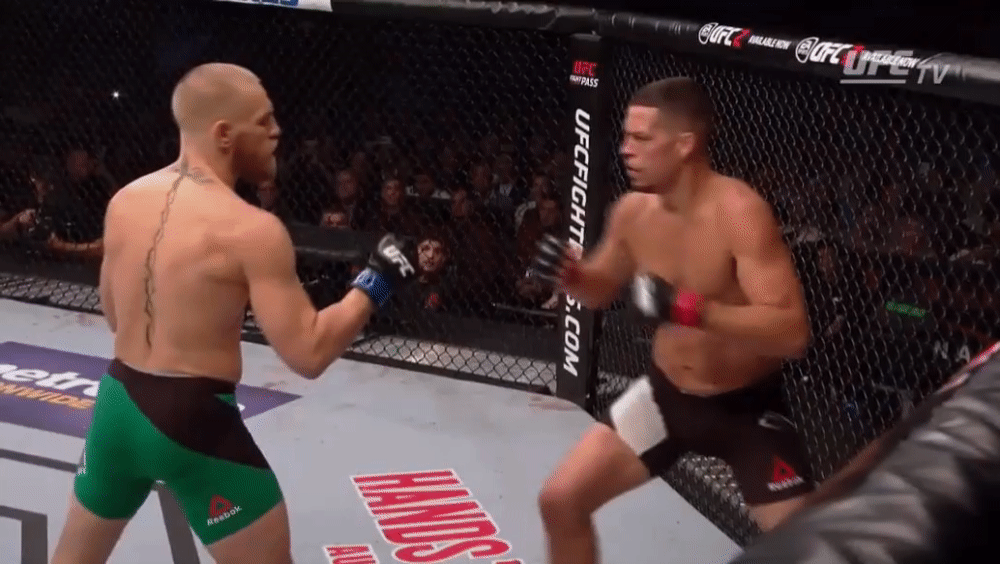
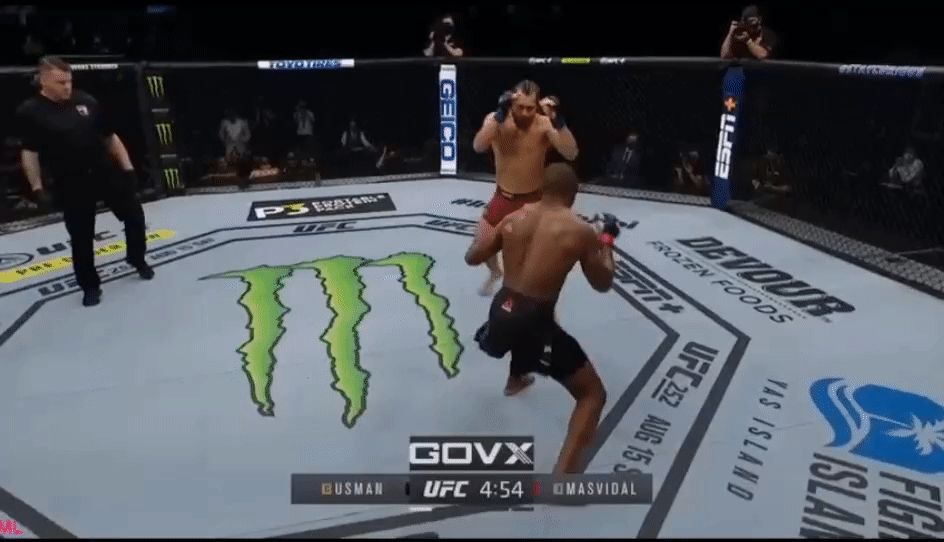
Fantastic suggestions. I sincerely hope they are listening.
ReplyDeleteGreat blog, looking forward to the next game and what they'll do.
ReplyDeleteGreat blog, looking forward to the next game and what they'll do.
ReplyDeleteThis is great! There are so many things to improve upon. Sadly I feel EA will do just enough to keep people buying the franchise.
ReplyDelete100% bro
ReplyDeleteThis is THE best bit of literature for improvements for the UFC series I have ever seen. EA take note.
ReplyDeleteBeautifully written. Hope they actually listen.
ReplyDeleteI and many other would love all of these features! But I cant help but feel that SOME of these suggested ideas arent very 'casual friendly'.
ReplyDeleteThat's all I can think of as a little bit of criticism. Other than that, love it
Like which ones?
DeleteI would love if the devs took a look at this. EA doesn't seem to make big changes between versions of their games, I think the clinch system is a good reason why they don't maybe, but I would like at least more varied animations for striking.
ReplyDeleteI wish the cuts were better and more violent. They really need to add more realism. Fouls for example. Maybe mistiming a shot and getting a low blow, or maybe eye pokes when posting the arm out when standing
ReplyDeleteLOVE IT!
ReplyDeleteONLY ONE HARD disagreement
Controls:
Stationary Cross - Triangle (as is)
Stepping Cross (but stay stationary after stepping) - Flick forward on the left stick and press Triangle
Implement Lunging as a way of alternate running (Flick forward and hold)
Add a normal forward moving step by step pace Strike - Push forward on the left stick and press Triangle
keep up the amazing job
I love it.
ReplyDeleteWould round kicks be able to be parried as they are sweeped in Muay Thai and mma?
ReplyDeleteThis was liquid gold to read from top to bottom
ReplyDeleteVery well written. The entire striking system needs to be based around vulnerability not bars, which is what will allow these interesting ideas to work instead of just a game of trying to land the highest dps moves as fast as possible. Also, instead of 50/50s let's make things more like 25/75s where the risky thing pays off only by making a read or very good luck.
ReplyDeleteWhen it comes to counters, like parries, for example, there can be a clear turn-based dynamic. Let's say I throw a straight strike and my opponent parries it: my turn became his turn. What he can do on his turn should be limited to a jab or straight only. However, by slipping to the left I can attempt to take back my turn. So if he does throw that straight, my head moves to the outside and it's my turn again. His counter play is simple and what my old coach used to do to me all the time: he *doesn't* throw the straight but instead let's me waste a second turn, and then he intercepts that slip with a left hook and it's lights out. And back to the vulnerability, it really should be. I want a full ragdoll, face to the canvas, and the ref waving it off.
GREAT BLOG!! I loved the ideia of the blocking change it would FOR SURE make the game feel more real!! I think ufc games NEED something to just feel more natural.
ReplyDeleteSomething I notice all the time is the damage is not brutal enough, after a 5 round war, or an active 3 round battle, I would like to see swealing like, real disfigurations, ortega vs max style and so many others.
Other thing that i would like to see changed is real phisical change. When your fighter is in the later rounds, most fighters look completly diferent. Gaethje for example almost changes skin color to a more red human beeing lol. and the hairstyles sometimes change too, little changes like that would make the game fell like its happening a real fight on the screen.
Some interesting ideas you are proposing. It would be great to hear your thoughts on the aspects of the game outside of striking.
ReplyDeleteAdditionally, it would be good if EA simply produced a game with current gen graphics. UFC 4 for the most part looks like it could have been released on PS3/ 360. The faces for the most part do not greatly resemble the characters they are trying to emulate. For such a limited game (compared to RPGs etc) it would nice if EA actually put in an effort to make the game look state of the art opposed to phoning it in.